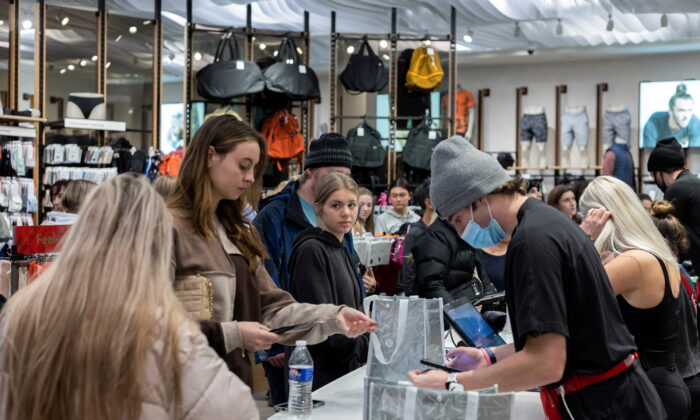
News commentary
Are the days of Black Friday producing black eyes coming to an end?
New data from Sensormatic Solutions revealed that traffic at retail stores on this year’s Black Friday tumbled 28.3 percent compared to the same time in 2019. But foot traffic at brick-and-mortar establishments was up 47.5 percent from last year when many shoppers stayed home because of the pandemic.
However, consumers did not substitute standing in line at the nearby Best Buy or Target for browsing online.
According to a holiday shopping report by Adobe Analytics, online sales on Black Friday dropped 1.1 percent for the first time ever to $8.9 billion.
Did shoppers wait until the Cyber Monday to purchase the latest gadgets and apparel? Not exactly.
Cyber Monday shopping levels also declined from last year. Adobe reported that internet receipts decreased 1.4 percent year-over-year to $10.7 billion. This was also the first time that one of the biggest shopping days of the year recorded a decline in sales.
Industry observers contend that the numbers are disappointing but noted that consumers are spreading out their shopping this holiday season, going back as far as October to add presents under the Christmas tree.
“With early deals in October, consumers were not waiting around for discounts on big shopping days like Cyber Monday and Black Friday,” says Taylor Schreiner, director at Adobe Digital Insights.
Other market analysts note that fewer deep discounts and scarcity potentially dissuaded customers from splurging on gifts.
Could this be the reason, or are consumers feeling the pinch of inflation and dissipating finances?
America’s inflationary environment is no secret, and many wage workers are feeling it in their wallets.
Despite average hourly earnings climbing 0.4 percent in October, the consumer price index (CPI) advanced 0.9 percent during the same period. As a result, inflation has wiped out these wage gains.
What’s more, consumers are spending more than they are taking in. Personal income rose 0.5 percent, while personal spending jumped 1.3 percent in October. Plus, the U.S. household savings rate has been steadily falling since the massive stimulus injection in March.
Clearly, Americans’ appetites for debt has been renewed, with total consumer debt balance growing $800 billion, or 6 percent, from 2019.
se trends may be beneficial in the short term for the retail sector and the broader economy. But trillions of dollars in private debt are unsustainable, particularly when the Federal Reserve inevitably raises interest rates to combat inflation.
This is comparable to the state of the economy: Using money the country does not have to support anemic growth.
Consumer spending, especially conducted by tapping, inserting, and swiping, fails to provide long-term economic value. Unfortunately, the Keynesian view that consumption—not saving—is what drives the economy has been the de facto policy for decades. Saving, they say, is inimical to economic growth.
Indeed, there is nothing inherently wrong with demand, no matter how much or of what. But demand is limited by previous production, which sparks compensation with a medium of exchange (money). individual turns this into savings that will be employed at a later date.
Boosting consumption with artificial means, such as deficit-financed stimulus checks and cheap credit fueled by historically low interest rates, distorts the economy and offers a jolt with only temporary positive effects.
Suffice it to say, consumers are tapped out, and depending on a Visa or Mastercard to consume establishes long-term consequences to the health of retail trade and the U.S. economy. When borrowing is no longer affordable and the printing presses can no longer operate 24/7, how can the public consume?
A recent Deloitte survey found that many high- and low-income individuals are spending more this Christmas because of rampant price inflation. present-day conditions have led to 11.5 percent of folks embracing their inner Scrooge and abandoning the spirit of gift-giving.
When 54 percent of Americans live paycheck to paycheck amid an intensifying cost of living, and roughly the same percentage are unable to cover a $1,000 emergency, millions of Americans are justified in shouting “Bah humbug!” this holiday season.
Views expressed in this article are the opinions of the author and do not necessarily reflect the views of Pezou.
Pezou : Abysmal Black Friday Numbers a Sign of Things to Come?